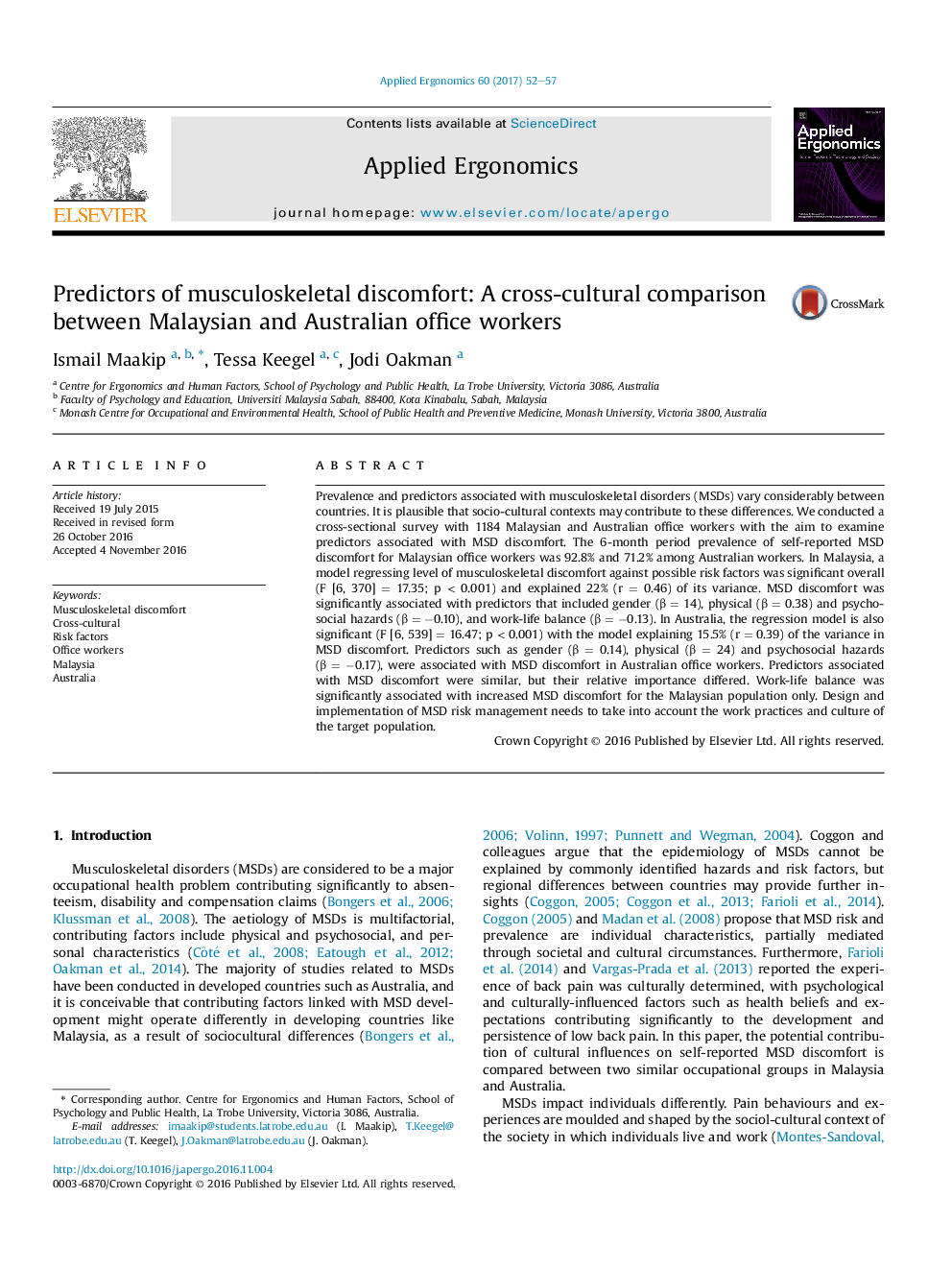ترجمه فارسی عنوان مقاله
پیش بینی ناراحتی عضلانی اسکلتی: مقایسه بین فرهنگی بین کارکنان اداری مالزی و استرالیا
عنوان انگلیسی
Predictors of musculoskeletal discomfort: A cross-cultural comparison between Malaysian and Australian office workers
| کد مقاله | سال انتشار | تعداد صفحات مقاله انگلیسی |
|---|---|---|
| 103208 | 2017 | 6 صفحه PDF |
منبع

Publisher : Elsevier - Science Direct (الزویر - ساینس دایرکت)
Journal : Applied Ergonomics, Volume 60, April 2017, Pages 52-57
ترجمه کلمات کلیدی
ناراحتی اسکلتی عضلانی، فرهنگی متقابل، عوامل خطر، کارمندان اداره، مالزی، استرالیا،
کلمات کلیدی انگلیسی
Musculoskeletal discomfort; Cross-cultural; Risk factors; Office workers; Malaysia; Australia;

